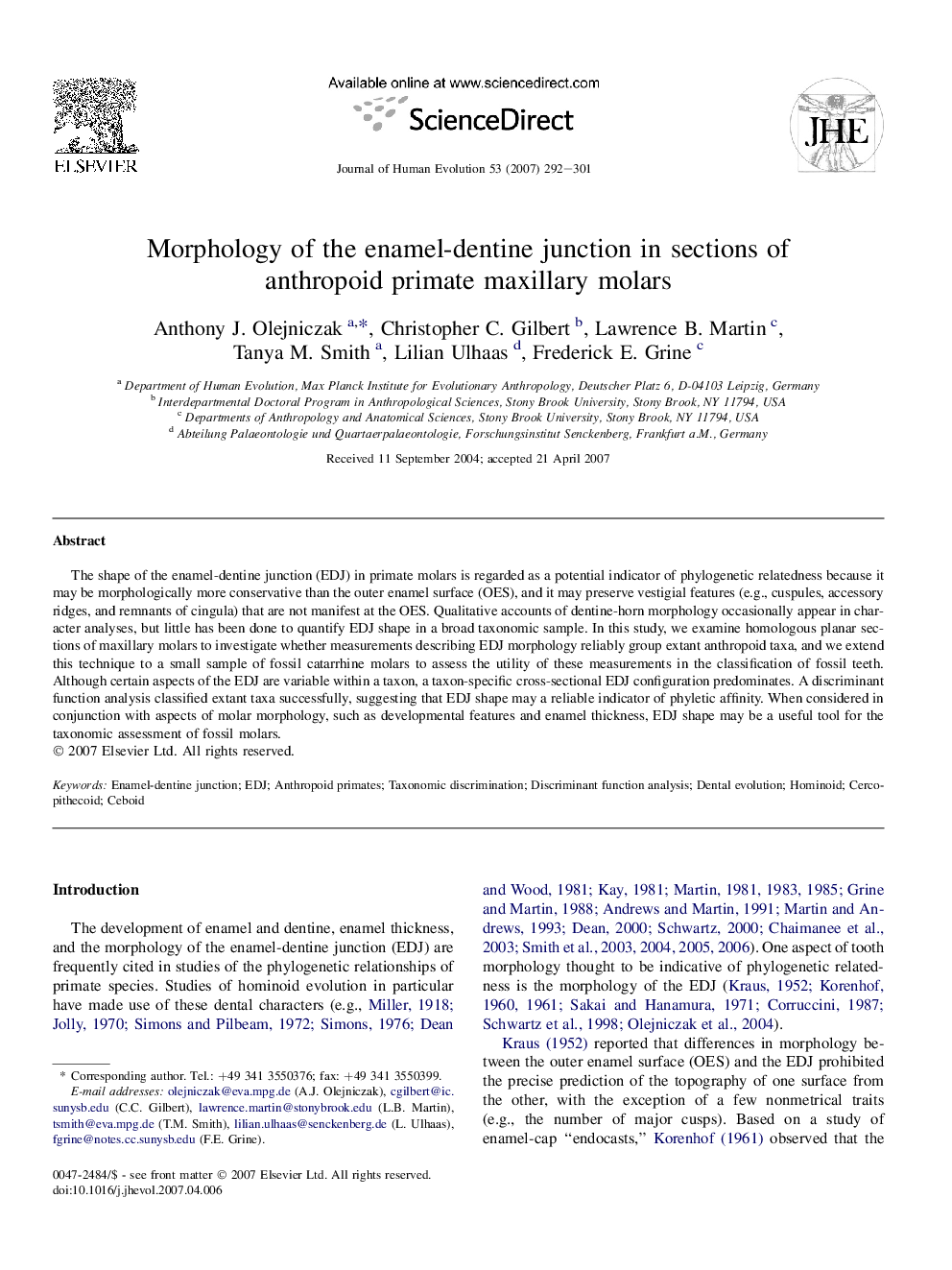| کد مقاله | کد نشریه | سال انتشار | مقاله انگلیسی | نسخه تمام متن |
|---|---|---|---|---|
| 4557312 | 1329543 | 2007 | 10 صفحه PDF | دانلود رایگان |

The shape of the enamel-dentine junction (EDJ) in primate molars is regarded as a potential indicator of phylogenetic relatedness because it may be morphologically more conservative than the outer enamel surface (OES), and it may preserve vestigial features (e.g., cuspules, accessory ridges, and remnants of cingula) that are not manifest at the OES. Qualitative accounts of dentine-horn morphology occasionally appear in character analyses, but little has been done to quantify EDJ shape in a broad taxonomic sample. In this study, we examine homologous planar sections of maxillary molars to investigate whether measurements describing EDJ morphology reliably group extant anthropoid taxa, and we extend this technique to a small sample of fossil catarrhine molars to assess the utility of these measurements in the classification of fossil teeth. Although certain aspects of the EDJ are variable within a taxon, a taxon-specific cross-sectional EDJ configuration predominates. A discriminant function analysis classified extant taxa successfully, suggesting that EDJ shape may a reliable indicator of phyletic affinity. When considered in conjunction with aspects of molar morphology, such as developmental features and enamel thickness, EDJ shape may be a useful tool for the taxonomic assessment of fossil molars.
Journal: Journal of Human Evolution - Volume 53, Issue 3, September 2007, Pages 292–301